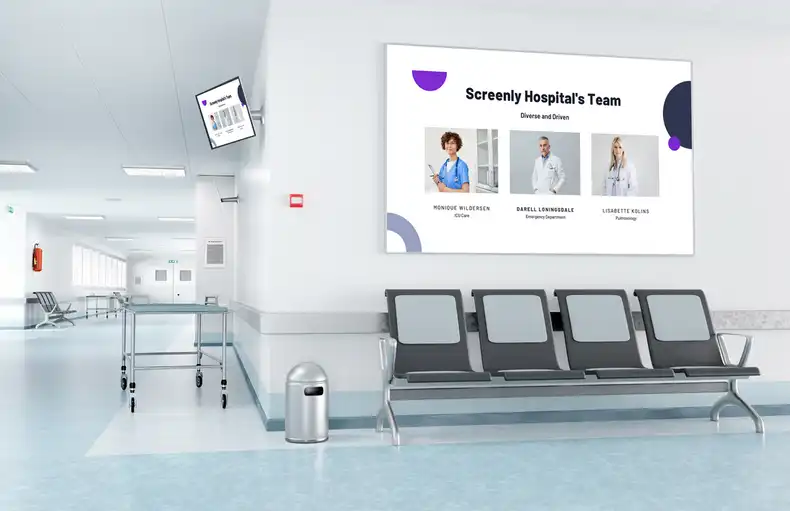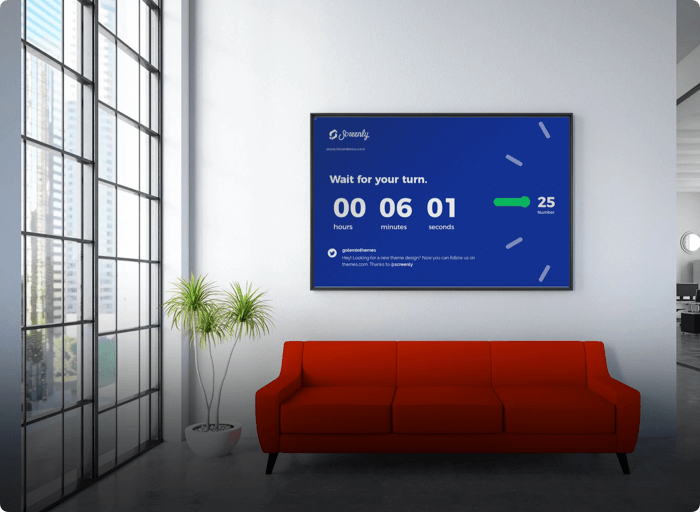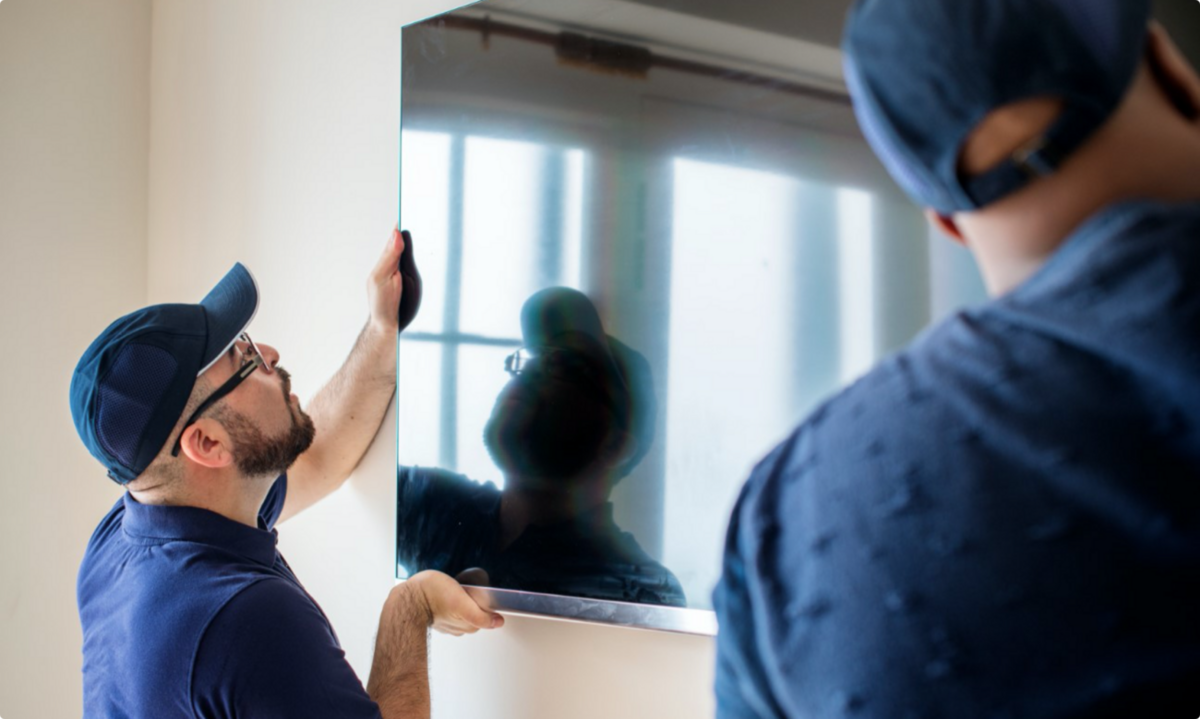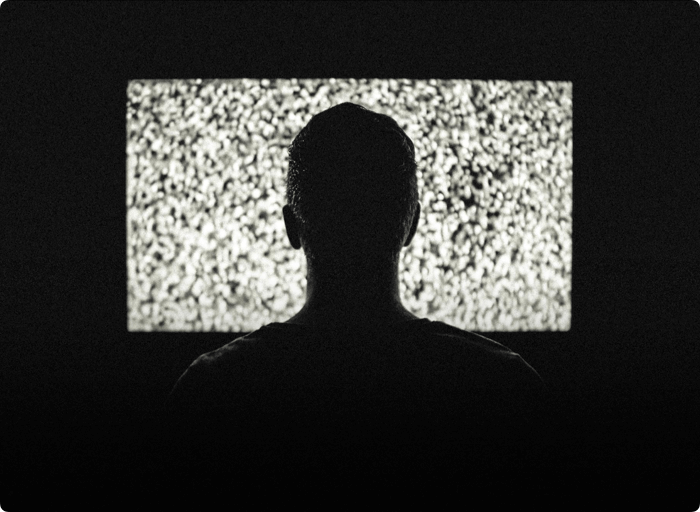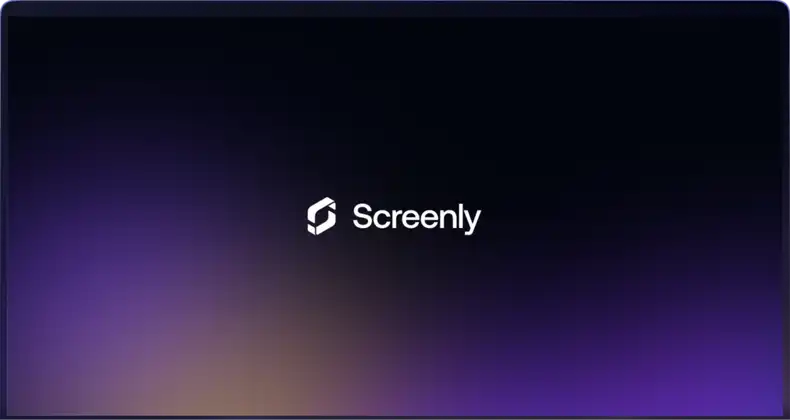Screenly makes digital signage for healthcare and digital signage for hospitals quick and easy. With Screenly, hospitals can deploy dozens or even hundreds of screens across their facility and manage the content on each of those screens remotely from anywhere with an internet connection. Learn more about hospital digital signage with Screenly in the post below, and see our case study on how we successfully launched hospital digital signage at a US hospital.
What’s needed for digital signage for hospitals
To start displaying custom content to patients and visitors, hospitals need to choose digital signage software, a digital signage player, and a digital signage screen. Screenly’s digital signage software provides a user-friendly solution that allows teams to quickly add and change out content on their screens from anywhere with an internet connection. A digital signage player is a small, physical device that renders content from digital signage player software to the digital signage screen. Hospitals can use any screen or digital display that accepts HDMI input (almost all modern TV screens) with their digital signage.
Content ideas for hospital digital signs
The main goal of hospital digital signage is to communicate with people using the facility, including patients, visitors, and staff. This communication in a healthcare setting can include important information like healthcare facility directions with wayfinding signage or estimated wait times. Waiting room digital signage can also display recent news, weather, or other content that helps reduce perceived wait times. Hospital staff, including healthcare providers, can display KPI metrics and shift schedules in breakrooms or information on upcoming patient flow.
Security and digital signage for healthcare
Many digital signage companies treat hardware and software security as an afterthought. This attitude and practice often results in embarrassing events where hackers display inappropriate content on a company’s signs. In more serious incidents, hackers use digital signage software and hardware to get deeper access to business systems and databases.
In the healthcare industry, personally identifiable information (PII) is highly confidential, and hospitals face large fines and consequences if this information is ever leaked. Accordingly, to keep patients’ electronic health records safe and maintain privacy in patient care, hospital systems invest heavily in cybersecurity and customer data protection. With Screenly, hospitals can rest assured that a digital signage deployment does not produce a new security vulnerability. Screenly maintains best practices in internet and device security, including process isolation, transactional and cryptographically signed updates, full device lockdown, no default credentials, and automatic security updates.
Learn more about security best practices at Screenly and what’s important for your hospital digital signage deployment.
Integrate with your hospital software systems with Screenly Edge Apps
To streamline workflows and provide real-time updates and content on your hospital’s digital signage, Screenly supports custom digital signage applications through Screenly Edge Apps. Users can run applications that use data from third-party software tools and hospital databases to build content and trigger when content runs.
For example, with Screenly Edge Apps, hospitals can integrate their digital signs with the electronic health record system to update lobby wait times as scheduled surgeries are marked as completed. Alternatively, the hospital can integrate its digital signs to display hospital codes and room locations when specialists or security need to be called in during emergencies. The more a hospital’s digital signs interact with the hospital’s existing business systems and data, the more digital signs can increase patient engagement and improve the overall patient experience.
Learn more about getting started with Screenly Edge Apps.
A case study: Screenly hospital digital signage in action
Below, we cover a recent deployment of Screenly at a US hospital. Learn more about Sceenly’s hospital use cases with an example of where it’s already happened, and get ideas on how you can improve your patient and staff experience at your healthcare facility.
Please note that the medical facility described here has requested that we withhold their name and other company information for privacy reasons. In this case study, we refer to the company simply as “the medical facility.”
Highlights
- With annual savings of over $20,000, the medical facility seeks to double its number of Screenly systems in the next two to five years.
- The medical facility plans for another 100 screens in addition to the 120 screens currently installed.
- Employees now enjoy smooth and consistent in-house communication, and, as a result, the medical facility shows boosted levels of employee engagement.
Company background
The medical facility is a US-based general acute care hospital that has over 500 beds and provides for between 250,000 and 300,000 patients annually. Additionally, the medical facility operates one of the largest emergency rooms in the country.
Utilizing an integrated healthcare delivery model, the medical facility alleviates a lack of healthcare access that would otherwise affect the surrounding community of over 1 million people.
The medical facility’s innovative healthcare model integrates patient navigation resources, electronic medical records, population-based care, and graduate medical education. Over 650 physicians are invested in more than 70 medical specialties in fields such as family medicine, internal medicine, general surgery, and obstetrics and gynecology.
The challenge
Previous attempts to utilize other digital signage solutions did not fare well for the medical facility. Managing ad hoc technology became increasingly tedious and financially draining. Moreover, the task of efficiently delivering content became a more difficult feat when the medical facility’s advertising campaign was extended to third-party facilities.
An alternative was needed. The medical facility considered the following requirements for this needed alternative:
- Cost-effective hardware with a small environmental footprint
- Remote screen management capabilities with automatic updates
- Hardened security suitable for a medical environment
- Simple interface to facilitate frequent content updates
The solution
For the medical facility, Screenly was primarily adopted for in-house advertising and patient education purposes. However, one manager at the medical facility notes that Screenly provides additional value as “the perfect solution for our in-house employee communication boards and food services locations.”
Unlike the medical facility’s previous digital signage solutions, Screenly provides the medical facility with the ability to manage screens outside of its network without third-party firewall configuration and security concerns. Most importantly, Screenly’s simple, intuitive user interface made the choice to switch a no-brainer for the medical facility’s marketing department.
The previously mentioned manager recalls what an easy process it was to adopt Screenly. The solution was “so intuitive” that it took no more than “a simple meeting of less than two hours” to train the marketing department on how to operate Screenly-powered screens. Afterward, barely any occasion called for further guidance. The medical facility has been using Screenly without major issues for over a year - an impressive duration for a solution to run hassle-free.
The medical facility currently manages about 120 screens through Screenly. With the initial deployment of Screenly complete, the medical facility plans to add a significant number of screens to complement the medical facility’s recent growth. In fact, over one hundred screens are estimated to accompany the doubling of the medical facility’s health systems over the next two to five years.
The results
Screenly’s consistent delivery of the medical facility’s content “anywhere within minutes” was so flawless that, in the previously mentioned manager’s words, “every time we’ve experienced an issue, it’s because we forgot to configure the network port.” On top of Screenly’s easy deployment and setup, the medical facility has received outstanding customer service from Screenly. As the manager recounts, “Screenly has been very receptive to our needs and suggestions… I don’t feel that we would have received this level of attention from another vendor.”
Financially, Screenly has led to drastic cost reductions. Screenly has saved the medical facility up to 130 working hours per month that previously went into updating digital signage content. This translates to an annual savings of over $20,000. In addition, Screenly has enabled the medical facility to “expand to partner facilities and local venues with little effort.”
Moreover, some less quantifiable - but nonetheless valuable - results have followed, such as improved customer and employee engagement. The manager at the medical facility elaborates that as a result of Screenly, employees appear “more engaged in organizational events.”
Getting started with hospital digital signage
Ready to give Screenly a shot? You can deploy digital signs and improve the patient experience at your hospital quickly and easily. Sign up for Screenly’s 14-day free trial.
You can also get started with ready-to-go content templates for hospital digital signs on Canva, which are linked here.
